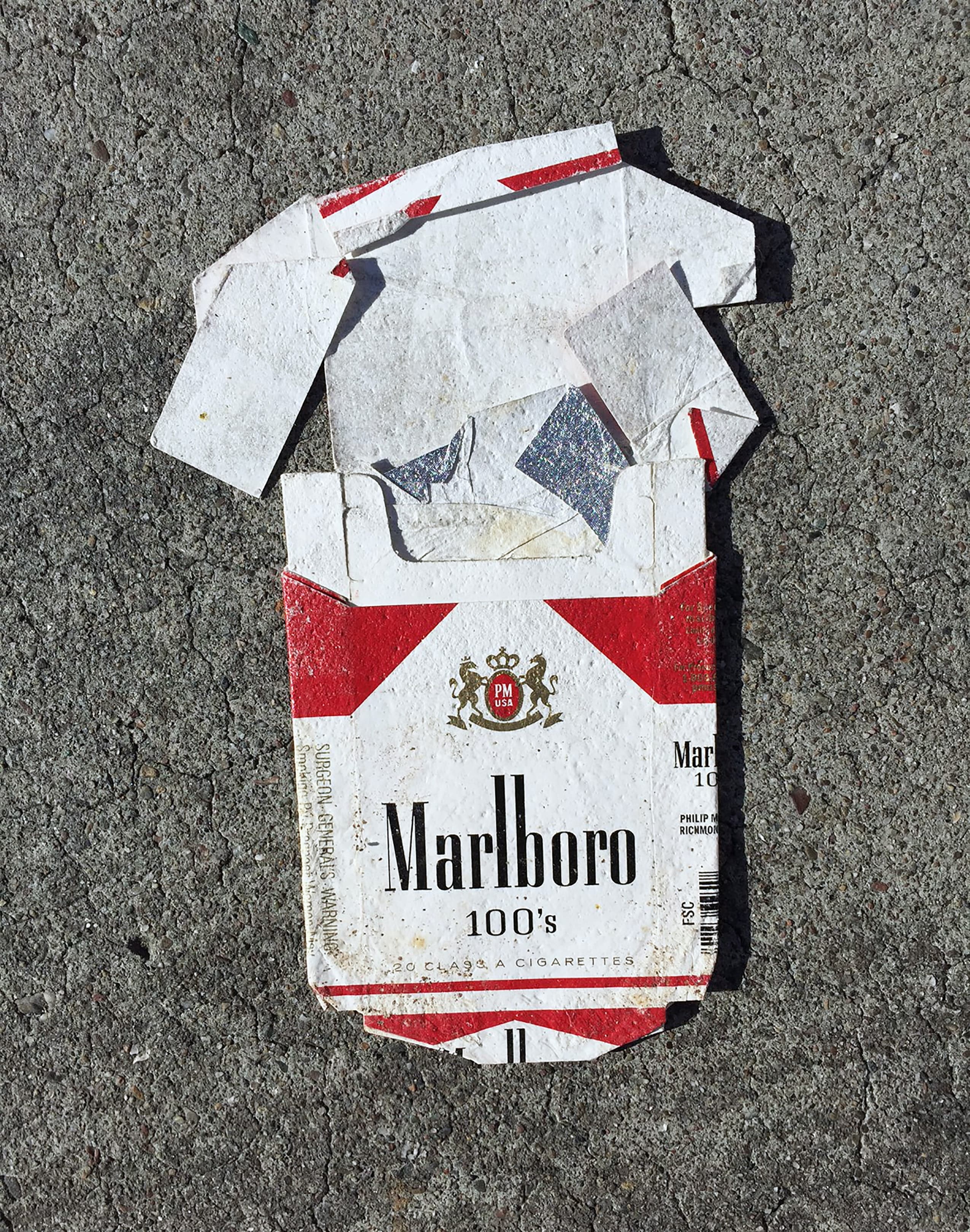How to Stay the Course After a Smoking Relapse
Rena Goldman
Nov 06, 2023

Smoking relapses are quite common. In fact, they’re often part of the quitting process.
A 2016 study found it could take as many as 30 attempts to quit smoking for good (1). That’s even more than previous estimates from the American Cancer Society, which cited 8 to 10 attempts, and the Centers for Disease Control and Prevention, which cited 8 to 11 attempts.
“Many people who have successfully quit have a slip,” says Scott Sherman, MD, MPH, professor of population health, medicine, and psychiatry at the New York University Grossman School of Medicine and a medical advisor to Oar Health.
A relapse doesn’t have to be the end of your quitting journey. There are tools you can use to get back on track.
Quitting terminology
If you quit smoking and pick up a cigarette again, it’s not automatically considered a relapse. Here are three terms associated with smoking after a quit attempt.
Slip
A slip is considered the first time you smoke at all after quitting. It could be taking a puff of someone else’s cigarette or smoking a whole cigarette.
Having one cigarette or a pull or two of a cigarette after quitting doesn’t have to ruin a quit attempt. You can get back on track without the slip turning into a lapse or relapse.
Lapse
A lapse is defined as smoking the occasional cigarette without returning to smoking as regularly as you did before quitting.
For some, it might start with a slip and be the period of time in which you gradually return to smoking with your original frequency. It goes beyond that first taste of nicotine after a quit attempt.
For example, someone might have a cigarette when they drink with friends without returning to their regular smoking patterns. This could be considered a lapse.
A lapse can turn into a relapse if your lapses become more frequent and the number of cigarettes you smoke increases.
Relapse
A relapse is a return to smoking regularly after quitting. It could happen immediately after a slip, or it could happen gradually, starting with a lapse.
Tips to recover from a smoking relapse
Most people who successfully quit smoking have gone through relapses. If you relapse, it doesn’t have to be the end of your quitting journey; think of it as part of the process.
You might be upset with yourself, but try to give yourself the same level of compassion you’d give a loved one who just went through a smoking relapse.
Stop a slip from becoming a lapse or relapse
Slips happen, but they don’t have to derail your quitting efforts. Smoking one or even a few cigarettes doesn’t mean you will start smoking again full time.
Sherman advises thinking of a slip as a bad day. It doesn’t have to ruin quitting. You can learn from it by asking yourself what prompted you to smoke. Then you can resolve not to smoke tomorrow.
If your slip does turn into a lapse or relapse, you can always start the quitting process again.
Learn from the relapse
If you started smoking again, you can also start to quit smoking again. Your relapse, and the reasons behind it, can help you better understand your smoking triggers.
“Each time we try to quit, we learn a bit more,” says Sherman.
Think about what worked and what didn’t. What was really hard about quitting? What went well? If something was really hard, think about how you can change that when planning your next quit attempt.
Consider medications
If you haven’t tried them, consider using nicotine replacement therapy or medications. These tools, alone or combined with counseling, can boost your chances of quitting.
“The success rate on any one [quitting smoking] attempt is lower without medication and counseling,” says Sherman. “Why not give yourself every bit of help you can?”
Nicotine replacement therapy delivers nicotine to your body without the need to smoke. There are five types available. They’re typically in the form of a patch, gum, or lozenge. You can buy them over the counter.
The Food and Drug Administration has approved bupropion and varenicline (also known as Chantix) as medications for smoking cessation. These are taken as pills. You’ll need a prescription from a doctor to get them.
Bupropion is an antidepressant that has shown effectiveness in helping people quit smoking in clinical trials (2).
Varenicline works by reducing the enjoyment your brain gets from nicotine.
Both nicotine replacement therapy and prescribed medications can help reduce the discomfort from nicotine cravings and withdrawal symptoms (3).
Oar Health enables you to work with a doctor to create a personalized plan for quitting smoking (or quitting again), which can include medication.
Start a new healthy habit
Smoking is a habit your mind and body have gotten pretty used to. If you want to quit, it can help to replace smoking with a new habit.
Try to think about an activity that’s healthy, sustainable, and enjoyable for you. It could be taking a walk with a friend instead of going out for a smoke break, or picking up a new hobby that keeps your hands busy.
Sherman recommends adding regular exercise into your new routine, which he says helps decrease cravings and improve your mood.
Another habit to adjust is your monthly spending. If you’re not buying cigarettes, you’ll have some extra money.
“Come up with a plan for what you’re going to do with the money you’re going to save from not buying cigarettes,” says Sherman. He suggests picking something to reward yourself or your family.
Be kind to yourself
Remember that quitting smoking is hard. You’re trying to change a behavior, and that takes time.
It can be discouraging when you relapse, but Sherman recommends focusing on the positives, not the negatives.
“If you go a month before relapse, that’s an accomplishment,” he says. “The hardest time in quitting smoking is the first two weeks.”
Remind yourself why you quit
Did you make a list of reasons why you want to quit smoking? Pull them out again and refresh your memory.
If you don’t have a list, make one. Ask yourself a few questions:
- What are the top three reasons you want to quit smoking?
- What do you look forward to doing when you quit smoking?
- What don’t you like about smoking?
- How will things change in a positive way if you successfully quit?
Ask for support
Your network of family and friends can help provide support, but they might not know what you need. Think about what was hard about the last time you quit and how support might have helped.
Let your family and friends know you’re trying to quit again. Tell them what they can do to support you. It could be checking in regularly or distracting you during a craving.
You might also want them to be understanding if you have to skip happy hour because having a drink triggers a cigarette craving.
Takeaway
Most people who successfully quit smoking have experienced slips, lapses, and relapses. Smoking again after you’ve stopped doesn’t have to ruin your chances of quitting. There’s an opportunity to learn something new and try something different on each quit attempt.
If you relapse, try to think of it as part of the process instead of being upset at yourself. As long as you keep trying, quitting is possible.
About The Author
Rena Goldman is a freelance journalist and editor based in Los Angeles. She has over a decade of experience and enjoys writing and learning about health, wellness, mental health, and how politics and policies impact our daily lives. Her articles have been featured in national publications and lifestyle brands.
Latest Articles

Jul 22, 2024
How Alcohol Impacts the Gut Microbiome
Xenia Ellenbogen

Apr 24, 2024
Naltrexone: The Benefits of Daily Use
Oar Health Editorial Team

Apr 02, 2024
Alcohol & Romantic Relationships: Reflections & Advice from Oar’s Ambassadors
Oar Health Editorial Team


